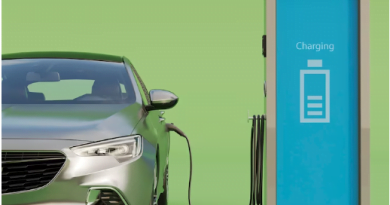Exploring the World of Robotics and Automation
Exploring the World of Robotics and Automation
Table of Contents
Introduction to Robotics and Automation
Types of Robots
- Industrial Robots
- Service Robots
- Social Robots
- Humanoid Robots
- Mobile Robots
Components of Robots
- Mechanical Structures
- Actuators
- Sensors
- Controllers
- Power Supply
Working Principles of Robots
- Perception and Sensing
- Planning and Decision Making
- Motion Control
- Actuation
- Integration and Coordination
Levels of Automation
- Manual Operation
- Fixed Automation
- Programmable Automation
- Flexible Automation
- Integrated Automation
- Autonomous Automation
Robot and Automation Applications
- Manufacturing and Assembly
- Warehouse and Logistics
- Healthcare and Medicine
- Defense and Security
- Space and Underwater Exploration
- Domestic Assistance
Recent Advances in Robotics
- Artificial Intelligence and Machine Learning
- Computer Vision and Tactile Sensing
- Swarm Robotics
- Soft Robotics
- Human-Robot Interaction and Collaboration
Benefits and Advantages of Robotics and Automation
- Increased Productivity and Efficiency
- Improved Quality and Consistency
- Enhanced Safety and Health
- Cost Savings
- New Capabilities and Possibilities
Challenges and Concerns of Robotics and Automation
- Technological Limitations
- High Upfront Costs
- Job Losses
- Legal and Regulatory Issues
- Security and Privacy Risks
The Future of Robotics and Automation
- Intelligent and Autonomous Systems
- Advanced Actuators and Materials
- Swarms and Distributed Intelligence
- Closer Human-Robot Interaction
- Pervasive Robotics Across Industry and Society
Conclusion
Exploring the World of Robotics and Automation
Introduction to Robotics and Automation
The fields of robotics and automation involve engineering machines and systems that can perform physical tasks and operate processes with minimal human intervention. Robotics focuses on designing and programming intelligent, sensory-enabled machines that can carry out jobs, while automation aims to automate tasks and workflows to improve efficiency mechanically. These technologies transform industries from manufacturing to agriculture, enabling new capabilities ranging from precision surgical robots to automated warehousing systems. This guide will explore the various types of robots, what comprises a robot, levels of automation, applications across domains, recent advances, benefits and challenges, and what the future may hold for these rapidly advancing fields.
Types of Robots
Robots come in many varieties tailored to specific purposes:
Industrial Robots
Powerful programmable robot arms excel at repetitive manufacturing tasks like welding, painting, and assembly.
Service Robots
Service robots assist people with tasks like cleaning, delivery, physical therapy, exoskeleton-assisted labor, and more.
Social Robots
Socially interactive robots are designed to communicate naturally with humans for education, entertainment, companionship, customer service, etc.
Humanoid Robots
Anthropomorphic bipedal and dexterous robots mimic human capabilities and behaviors.
Mobile Robots
Wheeled, tracked, legged, or flying robots can navigate environments autonomously or by remote control.
Components of Robots
Key elements that comprise a robot include:
Mechanical Structures
The physical robotic chassis, joints, linkages, manipulators, wheels, tracks, and frames allow controlled mobility and action.
Actuators
Actuators like motors and pistons transfer power into physical motion of the robot’s components.
Sensors
Sensors like cameras, LIDAR, and touch sensors collect data about the robot’s internal state and external environment.
Controllers
Microcontrollers or onboard computers process sensor data and execute programming to operate the robot.
Power Supply
Batteries, generators, or tethers provide electrical power to robot actuators, controllers, and other systems.
Working Principles of Robots
Key capabilities enable robots to function:
Perception and Sensing
Robots use sensors and data processing to understand their surroundings and internal conditions.
Planning and Decision Making
Programming determines actions by processing sensor inputs based on the robot’s goals.
Motion Control
Robot controllers coordinate actuators to traverse terrain or manipulate objects.
Actuation
Precisely actuated limbs, motors, and mechanisms enable performing physical tasks.
Integration and Coordination
Interrelated subsystems work together seamlessly to enable complex behaviors and actions.
Levels of Automation
Automation spans a spectrum of approaches:
Manual Operation
People perform work processes thoroughly without automation.
Fixed Automation
Automatic systems run repetitive pre-configured operations with minimal flexibility.
Programmable Automation
Programmed automated systems adapt to variable inputs within constrained limits.
Flexible Automation
Robots and machines automatically switch between operations in response to needs.
Integrated Automation
Interconnected automated subsystems coordinate complete workflows.
Autonomous Automation
Fully automated systems make decisions and optimize operations with minimal human input.
Robot and Automation Applications
Robots and automated machines handle a variety of real-world jobs:
Manufacturing and Assembly
Automated arms excel at welding, painting, precision assembly, packaging, and materials handling.
Warehouse and Logistics
Automated storage and retrieval systems sort and move inventory while autonomous mobile robots shuttle items.
Healthcare and Medicine
Robotic surgical assistants, exoskeletons, disinfection robots, and automated drug dispensing improve patient outcomes.
Defense and Security
Robots inspect hazardous threats, handle explosives, and perform surveillance and reconnaissance, among other dangerous duties.
Space and Underwater Exploration
Robots in extreme environments take measurements, collect samples, and map terrain.
Domestic Assistance
Home care robots can clean, monitor safety, fetch items, provide companionship, and act as interactive assistants.
Recent Advances in Robotics
Continual innovations expand robot capabilities:
Artificial Intelligence and Machine Learning
AI and ML supply robots with planning, perception, control, and decision-making intelligence.
Computer Vision and Tactile Sensing
Advanced sensors supply robots with detailed visual, tactile, auditory, and other sensory input.
Swarm Robotics
Coordinating large numbers of simple robots achieves complex collective behaviors and robustness.
Soft Robotics
Flexible and morphable robots made of soft, compliant materials suit human interaction.
Human-Robot Interaction and Collaboration
Improved interfaces, safety mechanisms, and intelligence allow closer teamwork between people and robots.
Benefits and Advantages of Robotics and Automation
Intelligent automation delivers many benefits:
Increased Productivity and Efficiency
Robots optimize workflows and complete tasks faster and more precisely than humans.
Improved Quality and Consistency
Automated production and processes ensure consistently high quality without human variability or errors.
Enhanced Safety and Health
Robots prevent workplace injuries by handling hazardous tasks so people don’t have to.
Cost Savings
More affordable and longer lasting than human labor over the long term in specific applications.
New Capabilities and Possibilities
Robots achieve feats impossible for humans, like exploring other planets or precise nanorobotic surgeries.
Challenges and Concerns of Robotics and Automation
Practical issues remain with robotic and automated technologies:
Technological Limitations
Performance constraints like limited battery life, lack of dexterity, and restricted intelligence prevent widespread robot adoption currently.
High Upfront Costs
The overhead of complex robotics and automation systems makes ROI challenging despite long-term TCO benefits.
Job Losses
Workers displaced by automation require retraining and new employment opportunities.
Legal and Regulatory Issues
Laws and regulations lag behind technology in domains like autonomous vehicles, professional use of robots, automation ethics, and more.
Security and Privacy Risks
Hacked or compromised robots and automation pose risks to safety, security, privacy, and ethical behavior.
The Future of Robotics and Automation
Exciting advances likely lie ahead:
Intelligent and Autonomous Systems
AI and machine learning will advance towards general robotic intelligence, surpassing narrow AI.
Advanced Actuators and Materials
Innovations in actuators, motors, and material science will improve robotic power, efficiency, adaptability, and durability.
Swarms and Distributed Intelligence
Advances in swarm coordination algorithms will enable complex emergent collective behaviors.
Closer Human-Robot Interaction
More intuitive, natural, and safe interfaces will allow seamless human-robot teamwork.
Pervasive Robotics Across Industry and Society
Robots will continue spreading across the economy into diverse industries and public spaces.
Conclusion
From factories to operating rooms to homes, robotics, and automation fundamentally transform how work gets done across practically every domain. Continued innovation promises to expand capabilities and adoption further while reducing costs and technical barriers. Successfully integrating these technologies requires solving open challenges around physical performance limitations, programming intelligence, legal ambiguity, security risks, and displacement of human jobs. Done responsibly, advanced robotics and automation can free up human energy and ingenuity for higher purposes, removing drudgery and expanding what is physically possible.
Frequently Asked Questions about Robotics and Automation
What are some key components that make up robots?
Core robot components include mechanical structures, actuators, sensors, controllers, and power supplies. The software also provides intelligence.
What are some examples of highly automated systems today?
Heavily automated examples today include manufacturing plants, warehouses, self-driving vehicles, robotic vacuum cleaners, and automated kiosks.
What industries are most impacted by increasing automation?
Some industries experiencing major transformations from automation include manufacturing, logistics, agriculture, services, restaurants, retail, and transportation.
What skills should workers develop to thrive alongside future automation?
Important skills include technical skills to operate and maintain automation, creative and social skills not easily automated, the ability to learn new skills, and emotional intelligence.
What are some potential societal risks posed by advanced robotics and AI?
Risks that require ethical considerations include privacy loss, algorithmic bias, autonomous weapons, existential threats from uncontrolled AI, and technological unemployment.




